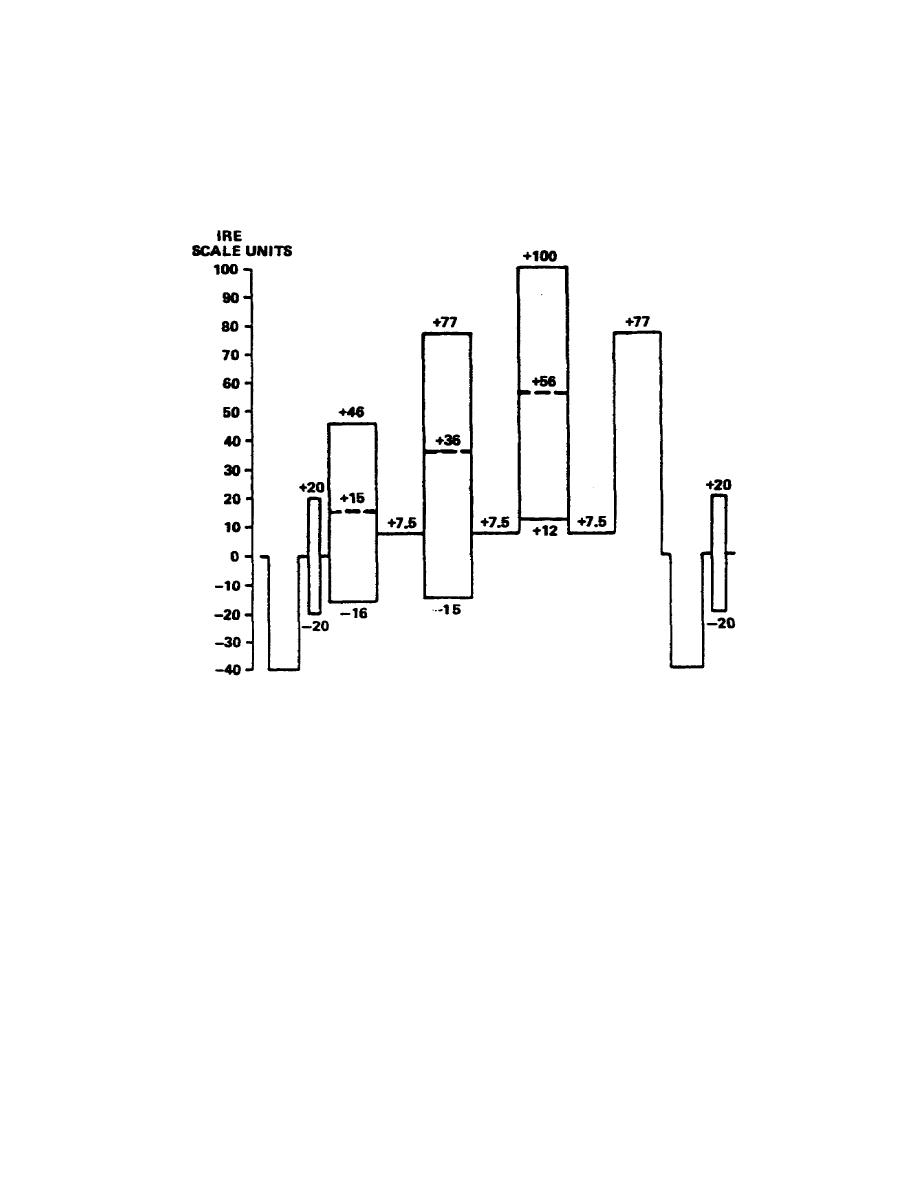
a. The chroma set signal is made up of the color bars, containing blue, in
reverse order.
The color bars signal contains blue in every other bar (blue,
magenta, cyan, and white).
The color set signal consists of four color bars,
separated by black bars (fig 2-5a). The color bars which contain blue are placed
beneath the EIA color bars that also contain blue, but in reverse order; blue
beneath white, magenta beneath cyan, and vice versa. To maintain timing, the color
set signal bars are separated by black bars of equal duration.
Figure 2-5a.
One line of chroma set signal, X-X1
b. The -I, W, Q, and B signals, used in the SMPTE color bar signal, contain a
black set signal (fig 2-5b). Its location and duration are identical to those of
the red color bar.
The signal itself is made up of three black amplitudes, 3.5
IRE, 7.5 IRE, and 11.5 IRE. This provides levels that are 4 IRE above and below
the setup level, making it possible to compare small differences in the black
level.
5. As stated earlier in this lesson, the SMPTE color bars signal is used for
making phase and gain adjustments in color monitors and for verifying overall
accuracy of the decoding functions. An experienced operator can learn to judge the
accuracy of monitor adjustments by direct observation of the color bar pattern.
For more objective measurements, the waveforms resulting from the decoding of the
color bars signal can be used. For example, the phase and gain adjustments may be
checked by observing the waveforms at appropriate points. The luminance component
of the color bars signal provides a convenient grey scale display for setting color
balance and tracking on color monitors.
35



 Previous Page
Previous Page
